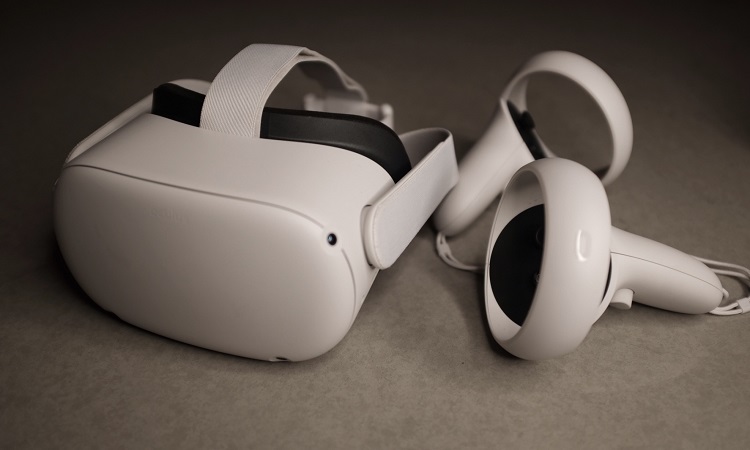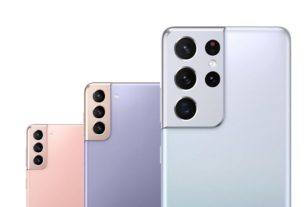That Oculus Quest 2 is one of the most affordable Virtual Reality systems on the market was something we already knew before putting the glasses on our heads. What was not so clear to us is whether the gaming experience was going to be up to par. After using them for a couple of months, we can already tell you that Oculus Quest 2 is one of the best options on the market to make the leap to Virtual Reality. Perhaps the best of all.
Yes, there are models with better features like HTC Vive Pro 2 or Valve Index, but their price range is much higher. The great strengths of Oculus Quest 2 are in its simplicity, its price and the fact that it is a system that runs games without having to depend on a PC.
Virtual Reality glasses ready to play
Accustomed to the complications of setting up a PC or preparing your PS VR to play with PS4, Oculus Quest 2 represents a really important paradigm shift. The glasses have an adjustable strap to place them on the head, the lenses can be placed in three positions to fit the best possible distance from our eyes and the controls are tremendously intuitive.
Admittedly, it took us a while to find the perfect lens distance and goggle placement to make everything look really sharp, but once we hit the sweet spot, the experience is truly intuitive. We are facing the first Virtual Reality glasses that, in our experience, fulfill the promise of transporting us to an alternative universe in a simple way.
The Touch controllers have seemed really sensational to us. The tracking of our movements is, we are not going to say unbeatable, but it is very close to perfection thanks to its imperceptible delay. The two games that left us freaking out in this regard during our first games were the mythical Beat Saber and Eleven Table Tennis, a ping-pong game in which the movements of our hand/racket are so realistic that it serves as the first Uncanny Valley of virtual reality. That moment when you think: how is this different from actually playing ping-pong? Well, in so little that it costs a world to stop playing.
The sensitivity of the triggers of the Oculus controls is also very striking. Just by bringing your fingers closer, the system already captures our movement, so that we can see our hands making the same movements in reality and in the game. We noticed this especially while playing The Climb 2, a climbing simulator that is not suitable for people with vertigo and that is surprisingly addictive for a title in which the “only” thing we can do is climb.
No need for a PC, a double-edged sword
Oculus Quest runs games on the glasses themselves without the need to connect to a PC or any other machine thanks to its Snapdragon XR2 chip. This means that everything is as simple as seeing a game in the Oculus store, hit download and start playing. But the best thing, without a doubt, is that there is no cable involved.
The glasses are completely autonomous, allowing us to move with great ease when playing, beyond the fact that after the first hour of play we may begin to notice the weight of the glasses themselves and some tiredness, despite the fact that we are dealing with a much lighter model than his predecessor. Playing with the peace of mind that we are not going to pull a cable that disconnects us from the experience offers us a freedom that, beyond being useful, immerses us even more in the games since we do not have to worry about anything bad happening in true reality.
This is also helped by the guardian system, an area that we must delimit in our game space (living room, bedroom, kitchen, in the middle of the garden or wherever we want to play) that prevents us from colliding with objects in our home. The best thing is that, after that threshold, the glasses stop showing the game to show the reality that surrounds us in black and white to remind us that we should not continue moving in that direction.
The autonomy and portability of Oculus Quest 2 do not have any drawbacks, beyond the fact that it does not allow us to enjoy the graphic power that glasses that connect to a PC do have. But don’t worry, because it has a solution and it’s better than we expected.
Air Link, the system to connect Oculus Quest 2 to PC
The truth is that the Facebook glasses can also be connected using a cable, which is undoubtedly the fastest and easiest solution to connect Virtual Reality to a PC. However, it has two drawbacks. One is the price of the official cable, which is nothing less than almost $2,000.00 pesos. The other is that this makes us lose that freedom and autonomy that we were talking about before.
For this reason, Oculus has developed Air Link, a wireless connection that is in Beta version and that allows us to do without the cable. Our experience with Air Link has been bittersweet, basically because we’ve run into a lot of trouble setting up the system. It took us a couple of weeks to find the problem after a good number of emails sent to the Oculus technical service that, everything is said, they treated us wonderfully.
However, the result of Air Link is good enough that it seems to us the future of Virtual Reality. We’re praying that PlayStation will create a similar system for PS VR 2, which will use a USB Type-C cable to connect the headset to the console. We were playing Half Life-Alyx like crazy through Air Link and the truth is that we ended up delighted, but we will talk about Valve’s jewel in another article because it more than deserves it.




